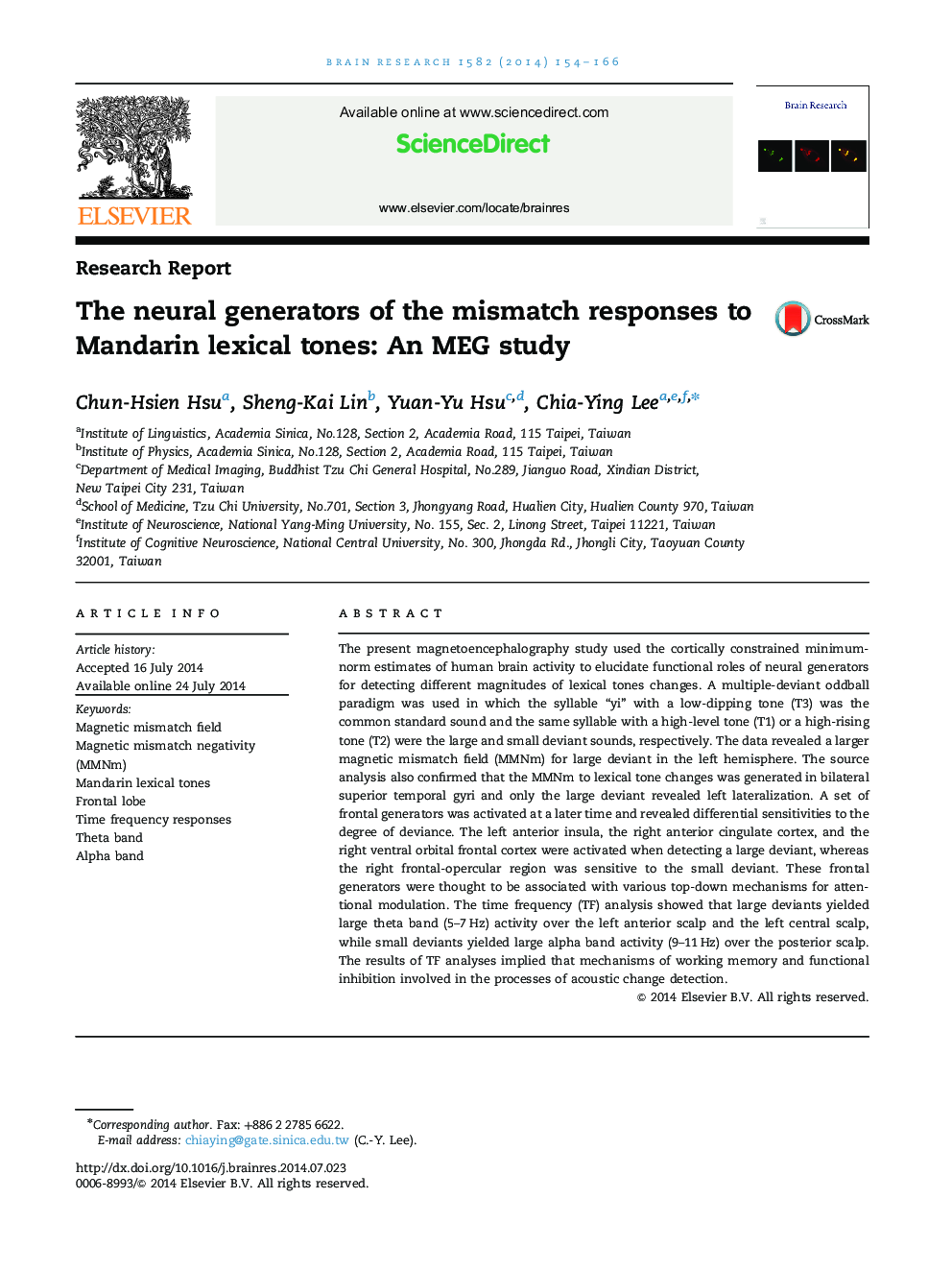| کد مقاله | کد نشریه | سال انتشار | مقاله انگلیسی | نسخه تمام متن |
|---|---|---|---|---|
| 4324104 | 1613857 | 2014 | 13 صفحه PDF | دانلود رایگان |

• Native Mandarin speaker’s MMNm to lexical tone is mainly left lateralized in STG.
• A set of frontal generators was found in response to large deviants.
• The right pars opercularis was particular sensitive to small deviants.
• Large deviants yielded large theta band activity.
• Small deviants yielded large alpha band activity.
The present magnetoencephalography study used the cortically constrained minimum-norm estimates of human brain activity to elucidate functional roles of neural generators for detecting different magnitudes of lexical tones changes. A multiple-deviant oddball paradigm was used in which the syllable “yi” with a low-dipping tone (T3) was the common standard sound and the same syllable with a high-level tone (T1) or a high-rising tone (T2) were the large and small deviant sounds, respectively. The data revealed a larger magnetic mismatch field (MMNm) for large deviant in the left hemisphere. The source analysis also confirmed that the MMNm to lexical tone changes was generated in bilateral superior temporal gyri and only the large deviant revealed left lateralization. A set of frontal generators was activated at a later time and revealed differential sensitivities to the degree of deviance. The left anterior insula, the right anterior cingulate cortex, and the right ventral orbital frontal cortex were activated when detecting a large deviant, whereas the right frontal-opercular region was sensitive to the small deviant. These frontal generators were thought to be associated with various top-down mechanisms for attentional modulation. The time frequency (TF) analysis showed that large deviants yielded large theta band (5–7 Hz) activity over the left anterior scalp and the left central scalp, while small deviants yielded large alpha band activity (9–11 Hz) over the posterior scalp. The results of TF analyses implied that mechanisms of working memory and functional inhibition involved in the processes of acoustic change detection.
Journal: Brain Research - Volume 1582, 25 September 2014, Pages 154–166